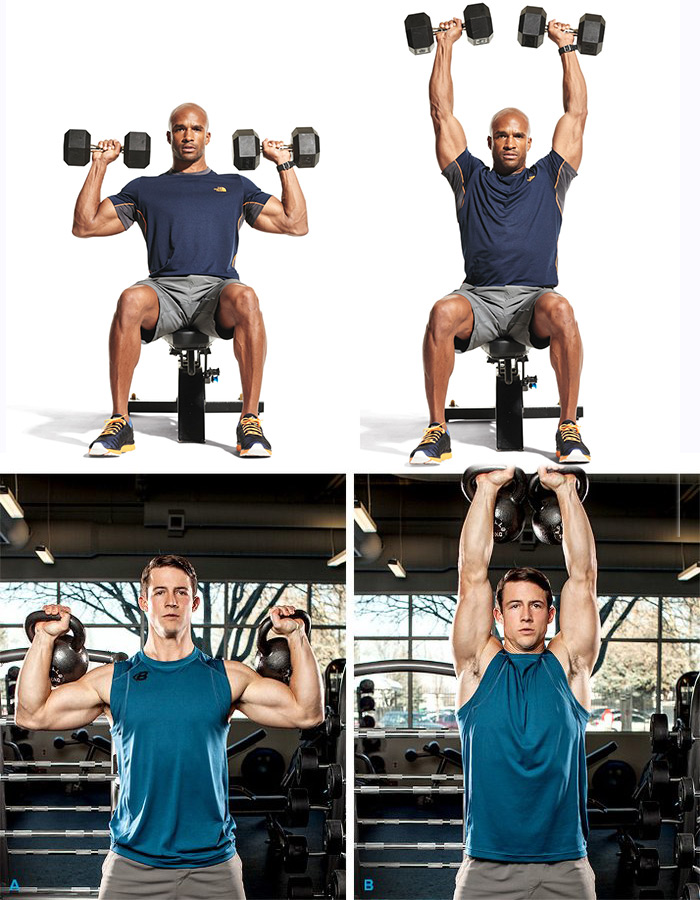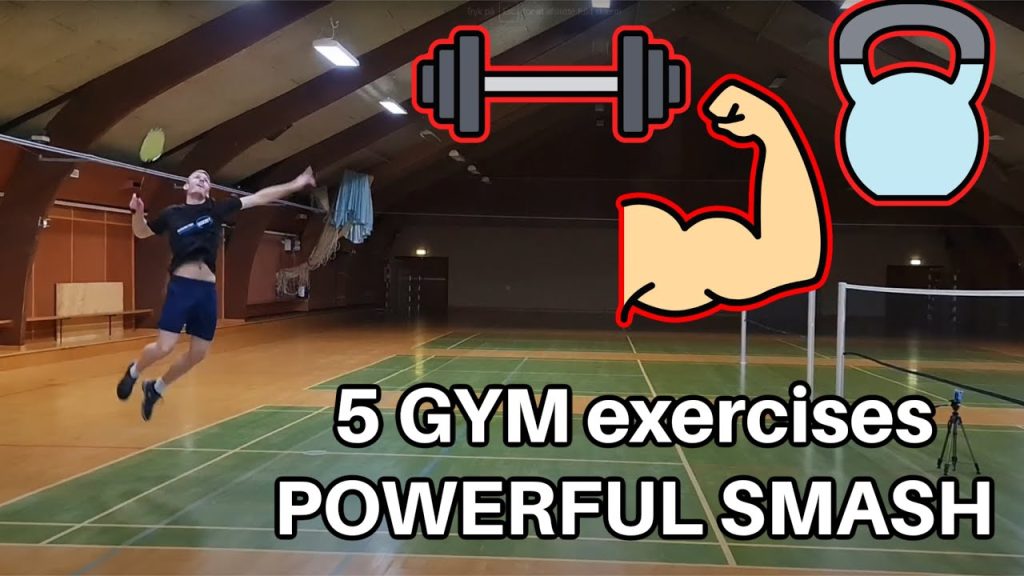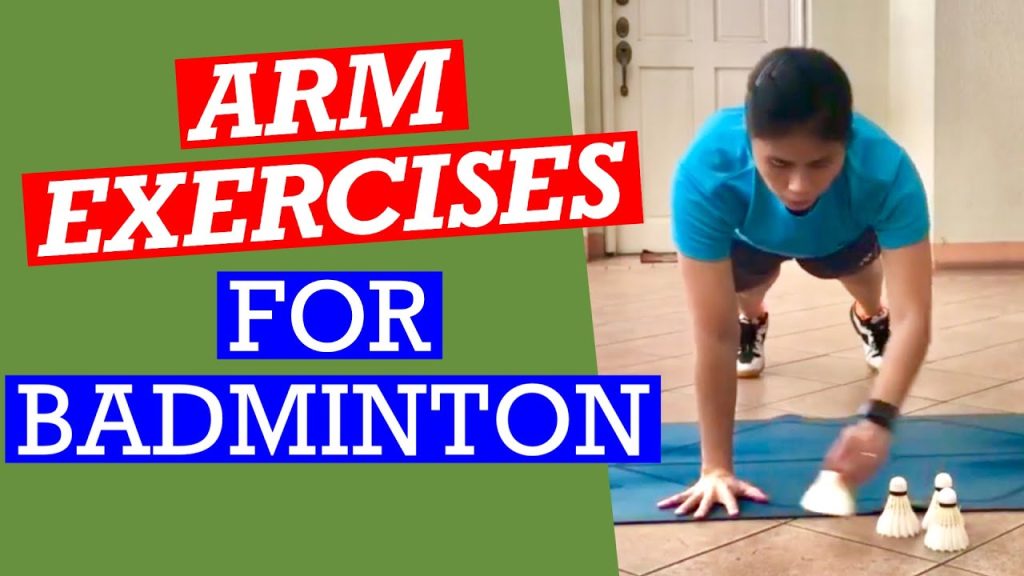Badminton smash strength training is essential for players who want to improve their game. A powerful smash can be a game-changer, giving you an edge over your opponents.
In badminton, the smash is one of the most aggressive and effective shots. It requires not just skill, but also a great deal of strength and precision. Strength training specifically for smashing can significantly enhance your performance on the court.
By focusing on the right exercises, you can build the power and speed needed for a devastating smash. This blog will guide you through effective strength training tips to boost your badminton smash, making your game more competitive and exciting. Get ready to elevate your smash power and impress on the court!
Introduction To Smash Strength
Badminton players know the importance of a powerful smash. A strong smash can change the game. It can score points and put pressure on your opponent. But how do you develop that strength? Let’s dive into the basics of smash strength.
Importance In Badminton
The smash is a key shot in badminton. It is aggressive and fast. A well-placed smash can end a rally quickly. It forces the opponent to react fast. This can cause errors and lost points for them. Players who can smash well have a big advantage.
Benefits Of Training
Training to increase smash strength has many benefits. First, it improves your overall game. Stronger smashes mean more points. Second, it boosts your confidence. Knowing you can hit hard relaxes you on the court. Third, it helps in other shots. Developing strength aids in clears and drives too.
Finally, it enhances your endurance. Smash training often includes overall fitness. Better fitness means you can play longer without tiring. So, not only does your smash get stronger, but you also become a better player all around.
Muscle Groups Involved
Badminton smash strength training requires a focus on specific muscle groups. Understanding these muscle groups can help improve your smash power. The main muscle groups are the upper body, core, and lower body muscles.
Upper Body Muscles
The upper body muscles are crucial for a powerful smash. These include the shoulders, chest, triceps, and forearms.
- Shoulders: Provide stability and strength for the smash.
- Chest: Helps in generating force during the smash.
- Triceps: Essential for extending the arm during the smash.
- Forearms: Important for wrist movement and control.
Core Muscles
Core muscles play a significant role in maintaining balance and power. These muscles include the abdominals, obliques, and lower back.
- Abdominals: Provide stability and aid in power generation.
- Obliques: Assist in the twisting motion of the smash.
- Lower back: Supports overall posture and movement.
Lower Body Muscles
Lower body muscles contribute to the explosive power needed for a smash. These muscles include the quadriceps, hamstrings, calves, and glutes.
- Quadriceps: Provide strength for jumps and quick movements.
- Hamstrings: Assist in explosive power and stability.
- Calves: Important for quick footwork and jumps.
- Glutes: Contribute to overall strength and stability.
Strength Training Basics
Badminton is a fast-paced sport that demands quick movements and strong strokes. To improve your badminton smash, strength training is essential. This section covers the basics of strength training to help you build the power needed for an impressive smash.
Types Of Strength Training
Understanding the different types of strength training can help you choose the right exercises. Each type targets specific muscles and skills.
- Resistance Training: Uses weights or resistance bands to build muscle strength.
- Bodyweight Exercises: Uses your own weight to enhance muscle endurance and power.
- Plyometric Training: Involves explosive movements like jumps to improve speed and power.
Combining these types can lead to a balanced and effective training routine. Focus on exercises that target the muscles used in a badminton smash.
Setting Goals
Having clear goals is crucial for tracking your progress and staying motivated. Start with small, achievable goals and gradually increase the difficulty.
| Goal Type | Examples |
|---|---|
| Short-term | Improve smash speed by 10% in one month |
| Long-term | Increase overall strength and muscle mass over six months |
Write down your goals and track your progress regularly. Adjust your training routine based on your performance to keep improving.
Power Exercises
Power exercises are crucial for enhancing your badminton smash strength. They help in building explosive power, allowing you to deliver faster and more forceful smashes. Below, we delve into two key power exercises: Plyometrics and Medicine Ball Throws.
Plyometrics
Plyometrics, also known as jump training, focuses on quick, explosive movements. This training helps in improving your leg power, which is essential for a strong badminton smash. Here are some effective plyometric exercises:
- Box Jumps: Jump onto a sturdy box and then step down carefully. Repeat.
- Depth Jumps: Step off a box, land softly, and immediately jump vertically.
- Squat Jumps: Perform a squat and then jump as high as possible.
These exercises enhance your leg strength and improve your overall agility.
Medicine Ball Throws
Medicine ball throws are excellent for building upper body power. This is essential for a powerful smash. Here are some effective medicine ball throw exercises:
- Overhead Throws: Stand with feet shoulder-width apart. Throw the medicine ball overhead and catch it.
- Chest Pass: Hold the ball at chest level. Push it forward with both hands against a wall.
- Rotational Throws: Stand with feet shoulder-width apart. Twist your torso and throw the ball against a wall.
These exercises help in improving your arm and shoulder strength, enabling you to generate more power in your smashes.
| Exercise | Benefits |
|---|---|
| Box Jumps | Improves leg power and agility |
| Depth Jumps | Enhances explosive strength |
| Squat Jumps | Builds lower body strength |
| Overhead Throws | Strengthens upper body |
| Chest Pass | Improves arm power |
| Rotational Throws | Increases torso strength |
Precision Drills
Precision drills are essential for badminton players seeking to improve their smash strength. These drills help players hit the shuttlecock with accuracy and power. Focusing on precision ensures that smashes land where intended, giving players a strategic advantage.
Target Practice
Target practice is crucial for developing precision in smashes. Set up targets on the court to aim at while smashing. These targets can be cones, markers, or specific areas on the court. Start by aiming for larger targets and gradually move to smaller ones. This helps in focusing your smashes and improving accuracy.
Consistent practice with targets will train your muscles to remember the precise angles and force needed. It also builds confidence in your ability to place smashes exactly where you want. Over time, your smashes will become more controlled and accurate.
Controlled Smashes
Controlled smashes focus on hitting the shuttlecock with the right amount of power. Begin by practicing smashes with moderate force. Gradually increase the power while maintaining control. This helps in avoiding wild, uncontrolled shots.
Use a partner or coach to feed you the shuttlecock at different heights and angles. This simulates real-game scenarios and helps in adjusting your smash technique accordingly. Practicing controlled smashes regularly will enhance your ability to hit powerful, accurate shots under pressure.
Remember to focus on your stance and grip. Proper stance provides stability, while the correct grip ensures better control over the shuttlecock. Combining these elements with controlled smashes will significantly improve your overall performance on the court.
Incorporating Resistance Training
Building a powerful badminton smash requires more than just practice. Incorporating resistance training can significantly enhance your smash strength. It helps develop the muscles involved in the movement. Resistance training also improves endurance, allowing you to maintain power throughout the game.
Band Exercises
Resistance bands are versatile and effective for badminton players. They are portable and easy to use. Band exercises target specific muscles used in a smash.
- Chest Press: Anchor the band at chest height. Press forward, simulating a smash motion.
- Lat Pulldown: Secure the band overhead. Pull down to engage your back muscles.
- Rotator Cuff Strengthening: Attach the band at waist height. Rotate your arm outward and inward.
These exercises improve muscle strength and stability. They also help prevent injuries.
Weight Training
Weight training is crucial for increasing smash power. It builds muscle mass and strength, enhancing your performance.
- Bench Press: Strengthens chest and arm muscles. Essential for a powerful smash.
- Deadlifts: Focuses on your lower body. Vital for generating force from the legs.
- Shoulder Press: Develops shoulder strength. Important for overhead smashes.
Weight training should be done with proper form. Incorrect form can lead to injuries.
| Exercise | Muscles Targeted |
|---|---|
| Chest Press | Chest, Triceps |
| Lat Pulldown | Back, Shoulders |
| Rotator Cuff Strengthening | Shoulders |
| Bench Press | Chest, Arms |
| Deadlifts | Legs, Back |
| Shoulder Press | Shoulders, Arms |
Combining band exercises and weight training maximizes your badminton smash strength. Start incorporating these routines into your training. Watch your smash strength improve over time.
Recovery And Rest
Badminton is a high-intensity sport that requires both strength and agility. After intense training, recovery and rest are crucial for muscle repair and overall performance improvement. This section will dive into the importance of rest and effective recovery techniques.
Importance Of Rest
Rest is essential for muscle recovery. During rest, muscles repair and grow stronger. Without adequate rest, the risk of injury increases.
Here are some benefits of rest:
- Muscle Repair: Rest helps muscles recover from intense workouts.
- Energy Restoration: Rest replenishes energy levels.
- Performance Improvement: Adequate rest leads to better performance.
Recovery Techniques
Implementing recovery techniques can speed up muscle repair. Here are some effective methods:
- Stretching: Stretching helps reduce muscle stiffness. It improves flexibility.
- Hydration: Drinking water aids in muscle recovery. It helps flush out toxins.
- Nutrition: A balanced diet supports muscle repair. Include protein-rich foods.
- Massage: Massaging muscles can reduce soreness. It promotes blood flow.
- Sleep: Quality sleep is crucial. Aim for 7-9 hours per night.
Here’s a simple table to summarize the recovery techniques:
| Technique | Benefit |
|---|---|
| Stretching | Reduces stiffness, improves flexibility |
| Hydration | Aids muscle recovery, flushes toxins |
| Nutrition | Supports muscle repair |
| Massage | Reduces soreness, promotes blood flow |
| Sleep | Essential for overall recovery |
Incorporating these techniques into your routine will enhance recovery. This will lead to better performance on the court.
.gif)
Credit: www.victorsport.com
Nutrition For Strength
Nutrition plays a key role in enhancing strength for badminton smashes. Proper nutrition supports muscle growth, recovery, and overall performance. Understanding what to eat before and after workouts can make a significant difference.
Pre-workout Nutrition
Eating the right foods before training can boost energy levels. Aim for a balanced meal with carbohydrates, proteins, and healthy fats. Whole grains, lean meats, and vegetables are excellent choices. Try to eat at least an hour before your workout.
Hydration is also important. Drink plenty of water throughout the day. A well-hydrated body performs better and reduces the risk of cramps. Consider a small snack, like a banana or yogurt, if you need a quick energy boost.
Post-workout Nutrition
Post-workout nutrition helps in recovery and muscle repair. Focus on consuming proteins and carbohydrates within 30 minutes after training. Eggs, chicken breast, and protein shakes are good options. They aid in muscle recovery and growth.
Replenish your glycogen stores with complex carbs. Sweet potatoes, brown rice, and quinoa are ideal. Don’t forget to rehydrate with water or a sports drink. This helps replace lost fluids and electrolytes.
Tracking Progress
Tracking progress in your badminton smash strength training is crucial. It helps you see improvements and identify areas needing more focus. This guide will cover two key ways to track your progress: keeping a training log and analyzing performance.
Keeping A Training Log
A training log is essential. Record each session in detail. Note the exercises, sets, reps, and weights used. Include the date and time of your workout. Write down how you felt during and after the session. This helps you see patterns and improvements over time.
Consistency is key. Make logging a habit. Review your log regularly. This will help you stay motivated. It will also show you how far you’ve come.
Analyzing Performance
Analyzing your performance is just as important as logging it. Look at your training log. Identify trends and changes. Are you lifting heavier weights? Are your reps increasing? These are signs of progress.
Pay attention to your smash technique. Is your speed improving? Is your accuracy better? Record these aspects too. Use video recordings if possible. Watching yourself can highlight areas for improvement.
Regular analysis helps you adjust your training. Focus on what works. Change what doesn’t. This will help you improve your smash strength more effectively.

Credit: www.sportsuncle.com
Common Mistakes To Avoid
Badminton players often want to improve their smash strength. Avoiding common mistakes can help achieve this goal. This section will discuss the common mistakes to avoid during smash strength training.
Overtraining
Overtraining is a common mistake in smash strength training. Many players think more training equals better results. This is not true. Overtraining can lead to fatigue and injuries. It is important to give your body enough rest. This helps muscles to recover and grow stronger.
Here are some signs of overtraining:
- Persistent muscle soreness
- Decreased performance
- Trouble sleeping
- Increased irritability
To avoid overtraining, follow these tips:
- Plan rest days into your schedule.
- Listen to your body.
- Ensure a balanced diet.
- Stay hydrated.
Ignoring Technique
Another mistake is ignoring the proper technique. Many players focus on strength alone. This can lead to ineffective smashes and injuries. Technique is crucial in delivering a powerful smash.
Key elements of a good technique include:
- Proper grip on the racket
- Correct body positioning
- Effective footwork
- Accurate timing
To improve your technique:
- Work with a coach.
- Watch professional matches.
- Practice consistently.
- Record and review your sessions.
By being aware of these common mistakes, players can enhance their smash strength. This leads to better performance on the court.

Credit: www.youtube.com
Frequently Asked Questions
What Is Badminton Smash Strength Training?
Badminton smash strength training focuses on improving power and speed for smashes. It enhances muscle strength, endurance, and technique.
How To Improve Smash Strength In Badminton?
To improve smash strength, incorporate resistance training, plyometrics, and core exercises. Consistent practice and proper technique are crucial.
What Exercises Help With Badminton Smash?
Exercises like squats, lunges, push-ups, and medicine ball slams help. These strengthen muscles used in smashes.
How Often Should I Train For A Stronger Smash?
Train at least three times a week. Include strength, endurance, and technique drills for optimal improvement.
Conclusion
Strength training for badminton smashes is crucial. It boosts power and speed. Consistent practice leads to better performance. Focus on key muscle groups. Include exercises like squats and lunges. Proper technique prevents injuries. Stay committed and see results. Remember, a strong smash can change the game.
Train regularly and improve your skills. Happy smashing!



